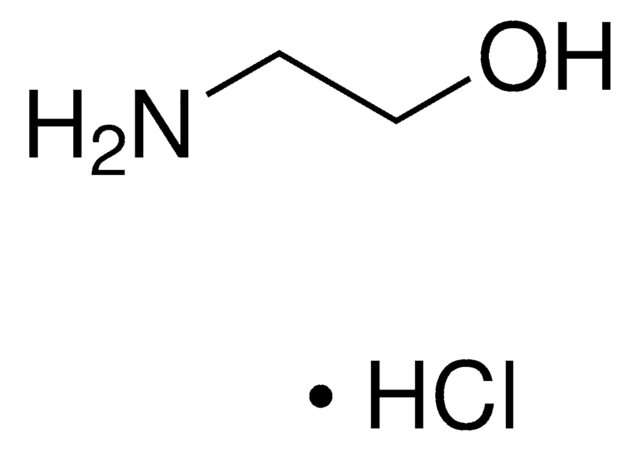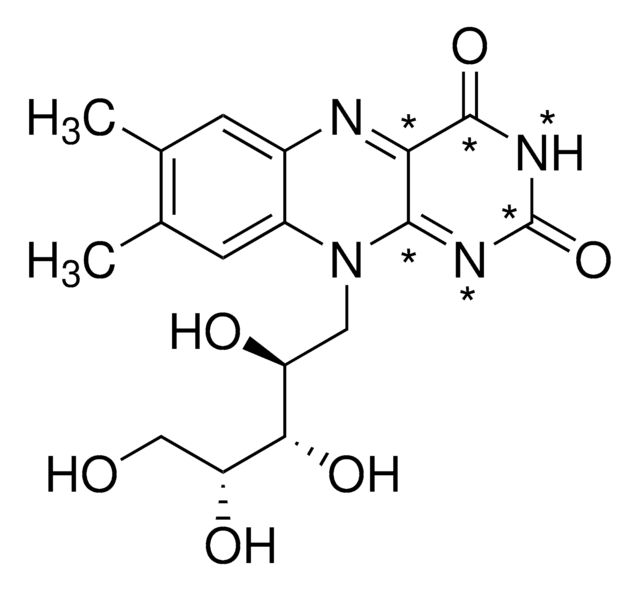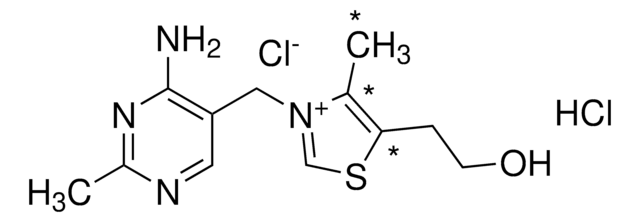E6133
Ethanolamine hydrochloride
≥99.0%
Synonym(s):
mea hydrochloride, monoethanolamine hydrochloride, 2-Aminoethanol hydrochloride
About This Item
Recommended Products
Quality Level
assay
≥99.0%
form
powder or crystals
storage condition
dry at room temperature
technique(s)
HPLC: suitable
color
white
pH
9—10
pKa (25 °C)
9.5
mp
82-84 °C (lit.)
solubility
water: 0.33 g/mL, clear, colorless to very faintly yellow
density
1.07 g/cm3 at 20—25 °C
1.12 g/cm3 at 20—25 °C
suitability
suitable for chromatography
application(s)
general analytical
life science and biopharma
pharmaceutical
SMILES string
NCCO.[H]Cl
InChI
1S/C2H7NO.ClH/c3-1-2-4;/h4H,1-3H2;1H
InChI key
PMUNIMVZCACZBB-UHFFFAOYSA-N
Looking for similar products? Visit Product Comparison Guide
Related Categories
General description
Application
- in overnight incubation of the tips to attach primary amine groups at the tip surface
- in the preparation of DMEM (dulbecco′s modified eagle′s medium)/F-12 media to culture human epidermal growth factor receptor 2 (HER2) cells derived from MMTV-HER2 transgenic mouse mammary tumors
- to administer the cultures to study its effect on the endogenous phosphatidyl ethanolamine pool and autophagy process
- in a study as a reagent to study molecular interactions and adhesion forces in biological systems using Atomic Force Microscopy
- to prepare the reagent for surface-enhanced laser desorption ionization analysis, aimed at studying the role of Interleukins
Biochem/physiol Actions
Features and Benefits
- Suitable for Immunology, Cellular Biology and Biochemical Research
- Tested to confirm low levels of heavy metal contamination, ensuring suitability for various applications
- Effective Buffering Agent with a pKa of 9.5 (25 °C)
Other Notes
comparable product
Storage Class
11 - Combustible Solids
wgk_germany
WGK 1
flash_point_f
Not applicable
flash_point_c
Not applicable
ppe
dust mask type N95 (US), Eyeshields, Gloves
Choose from one of the most recent versions:
Certificates of Analysis (COA)
Sorry, we don't have COAs for this product available online at this time.
If you need assistance, please contact Customer Support.
Already Own This Product?
Find documentation for the products that you have recently purchased in the Document Library.
Customers Also Viewed
Our team of scientists has experience in all areas of research including Life Science, Material Science, Chemical Synthesis, Chromatography, Analytical and many others.
Contact Technical Service



